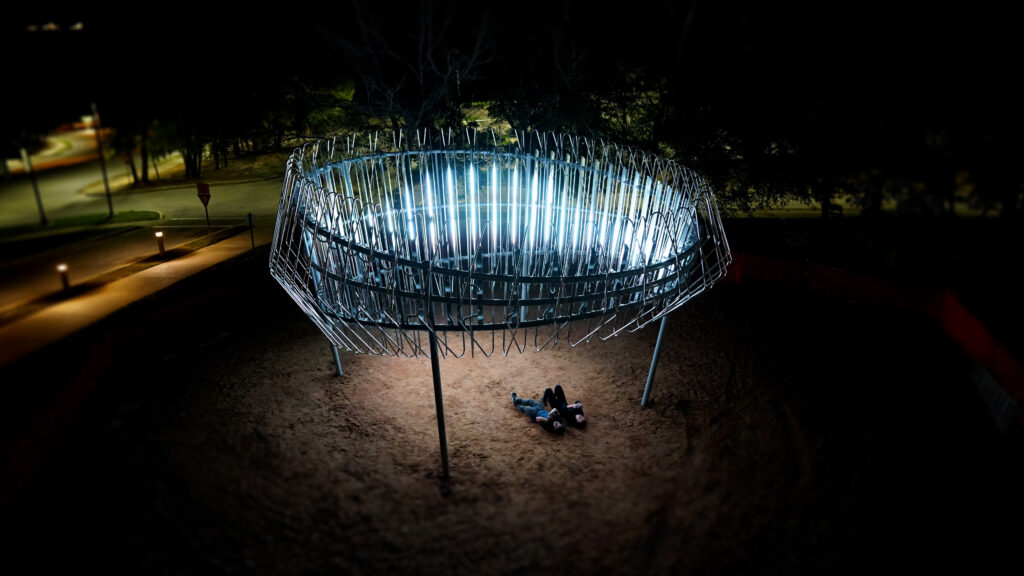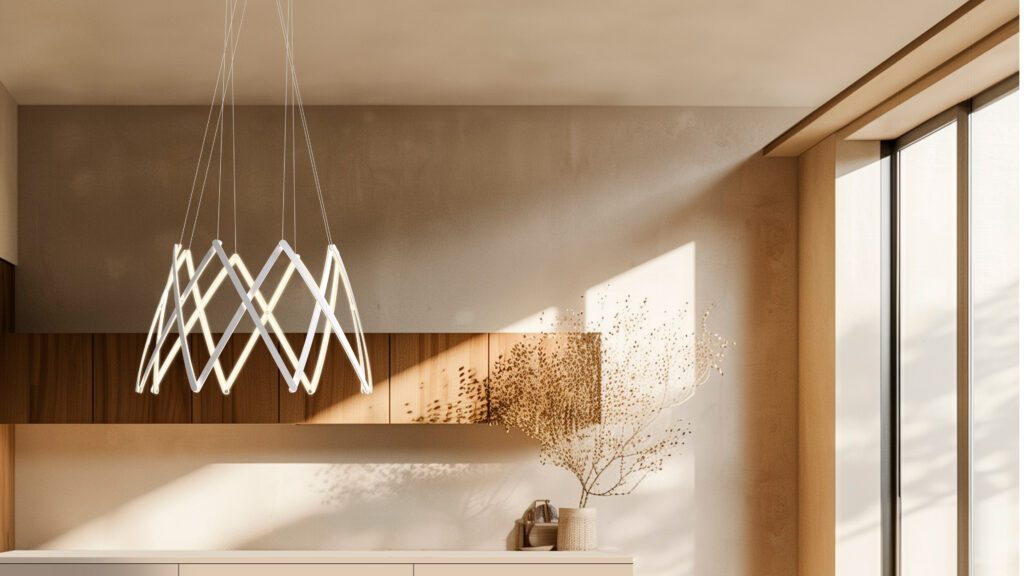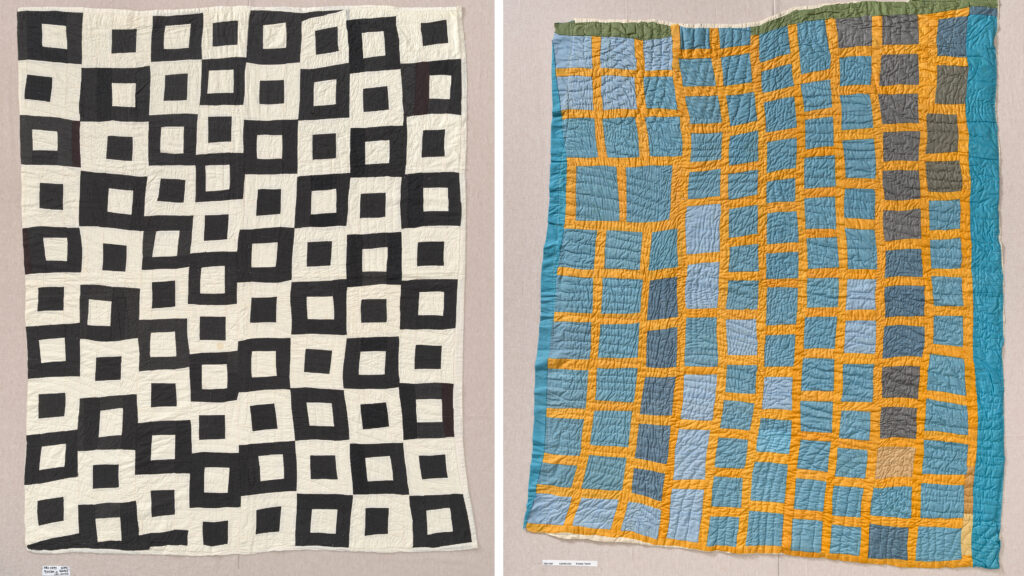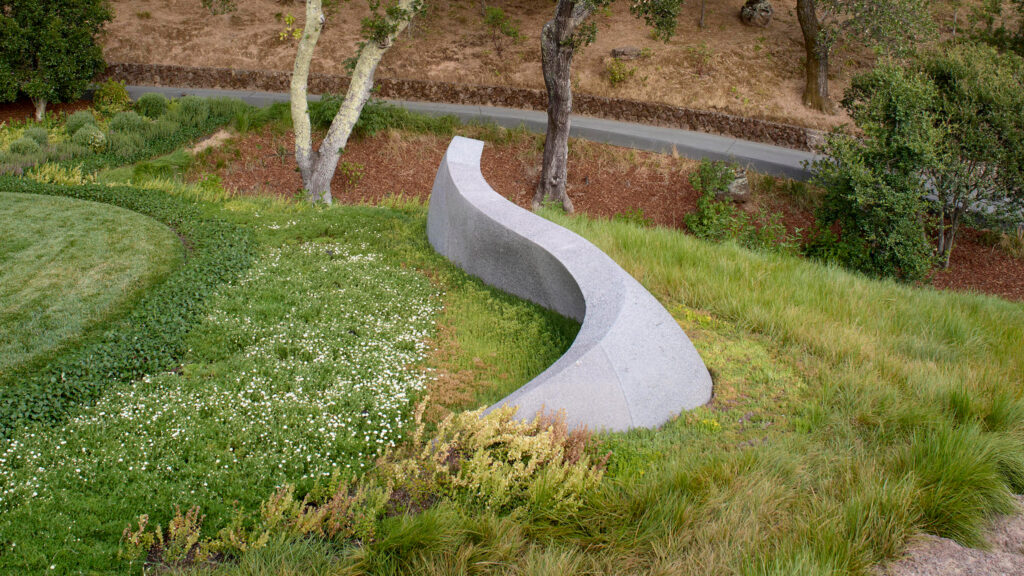Past Redux, Future Fixes
As a child in a household of physicists and scientists, artist Andy Hope — whose show Yesterday’s Tomorrows is currently on view at the Catharine Clark Gallery in San Francisco — was steeped in the utopian and dystopian visions imagined by pioneering science fiction writers of the 1940s through the 1960s.

His grandfather, with whom he lived, was deeply involved in radar research at the Houston Space Center. Yet Hope’s own pursuit of applied physics at Stanford eventually gave way to a deeper urge: to reconcile the discordant predictions of post-WWII writers and scientists through art. For a time, he channeled that urge into designing buildings and furniture. But the clashing forecasts — of Earth’s inevitable demise by bombs and pollution, or the boundless colonization of space — proved distracting. Instead, he gravitated toward cultivating more hopeful visions of his own.
“I have not seen a compelling representation of space living,” Hope said. “We’re trying to solve problems we’ve created with new technology. Instead, we need to salvage our own unique planet before we go into space and ruin others.”
In Hope’s otherworldly landscapes, lost spacecraft and mysterious constructions drift through imagined terrains — structures that echo the conceptual floating cities envisioned by Archigram, the visionary British architecture collective of the 1960s. Across more than a dozen collages and sculptures, Hope fuses past and present visions of the future. He meticulously layers printed sci-fi imagery from the ’60s with contemporary deep-space photographs, integrating stained glass, 3D-printed parts, and background elements generated entirely by AI.
cclarkgallery.com
Ruth Asawa and Fuller
San Francisco artist Ruth Asawa, an American, was confined in a WWII Japanese internment camp before arriving at Black Mountain College, where she encountered both Josef Albers of Bauhaus fame and Buckminster Fuller —seminal mentors who would deeply influence her work. During a field trip to Mexico, she also learned to make looped-wire baskets. What began as baskets evolved into her signature modern sculptures—just as Fuller’s own experimental designs led to the refinement of the geodesic domes for which he became renowned.

Now, Asawa’s work has stepped fully into the limelight. With support from Google.org, SFMOMA has mounted one of the most comprehensive exhibitions of her career. Spot the “Martian eyes” and alien floral forms at Ruth Asawa:
Retrospective, on view through September 2.
SFMOMA.org
Galaxies and Clouds
“We’ve been working at the intersection of public art and architecture for a long time,” says Jason Kelly Johnson, who co-founded the aptly-named San Francisco design firm Futureforms in 2009 with his wife, Nataly Gattegno.

While they were in grad school at Princeton, Gattegno studied under Elizabeth Diller—of High Line fame—who pioneered architecture that blends design, performance, and electronic media and the duo began exploring similar ideas.
Gattegno now chairs Graduate Architecture Programs at California College of the Arts and Johnson runs its Digital Craft Lab, but their Dogpatch studio is where they develop futuristic public art.
Their sculptures often appear in new parks, including Orbital — three intertwined serpentine forms rising three stories — beside Uber’s Mission Bay headquarters. Its facted stainless steel “snakes” reflect light and evoke movement.
In Washington D.C., Lightwave transforms an underpass near Union Station. Its LEDs respond to Amtrak trains overhead, echoing the motion-sensor-triggered Bus Fountain by Ned Kahn at Salesforce Park in San Francisco.
Another piece, Constellations, at the University of West Florida, features a raised circular structure with ribbons of rippling lights that invite quiet interaction.
Now, with their cloud-like Nefos cocktail table, Futureforms is taking their work home. Debuted at the 2024 ICFF in New York, the sculptural piece adapts fabrication techniques from their canopies and installations. Built from welded rings, it’s a childproof nod to Noguchi’s iconic table—designed with the pair’s own kids in mind.
Futureforms.us
Folding Out
There’s a satisfying symmetry when identical twins design a ‘One-Size-Fits-All’ pendant lamp. That’s precisely what San Francisco-based designer Pablo Pardo embarked on at the tail end of the pandemic—collaborating remotely with his twin brother Fernando, an industrial designer in Los Angeles.

“Fernando had sketched a scissor-like lamp design,” Pardo recalls. While conceptually clever, it felt visually flat. So, at his eponymous, award-winning studio, Pablo Designs—not far from the Museum of Craft and Design—and over countless Zoom sessions, the brothers began evolving the idea into a more sculptural, circular form. Their goal: a fixture that occupies minimal space, emits a soft ambient glow, and effortlessly expands to brighten larger areas.
Born in Venezuela to a family of artists and engineers, the Pardo brothers were instinctively drawn to the process. What began as rough studies in foam core and MDF matured into precise, functional prototypes using matte-painted aluminum and flexible plastics.
By reworking the pivot points of the lamp’s crossed arms, they arrived at an umbrella-like motion. “That’s when the magic happened,” Pardo says. The final iteration conceals its fasteners and minimizes any visible mechanics—more kinetic sculpture than utilitarian fixture.
While Pablo has previously explored drum-shaped pendant forms, this star-shaped piece—named Stella—breaks the mold. Its telescoping design expands from 10 to 60 inches and can even invert to softly illuminate the ceiling. “It’s dynamic, like a flower in bloom,” Pardo says.
Stella pendant, $1,500. Pablodesigns.com
Fracturing Old Ground
Cardenio Petrucci, a longtime purveyor of furnishings in San Francisco, has teamed up with Los Angeles-based partner Mattia Biagi to launch MC+ Design Studio—a design consultancy focused on producing limited edition, avant-garde designs. “We are inspired by the Italian designer Vincenzo de Cotiis,” Petrucci notes.

Last year, during Milan Design Week, the duo received Interior Design magazine’s Best of Year award for their Impexa kitchen—a striking series of minimalist, freestanding trapezoidal volumes with countertops designed to provide storage, and house a pop-up faucet and sink. “There are no right angles,” Petrucci says.
Another standout was their Orbis knotted wool rug—made up of several separate segments symbolizing cracked desert earth where new growth emerges after a storm.
This year in Milan, Petrucci and Biagi unveiled Fractals—a collection featuring metal-and-leather benches with high-gloss, smooth surfaces juxtaposed against richly textural, hand-stitched, and patterned leather upholstery.
Interior designer Erin Martin, a fan of their work, features select pieces from MC+ in Martin, her St. Helena gallery and showroom. “We consider ourselves artists who like to experiment,” Petrucci explains. “It is functional art.”
Mcplusdesign studio.com
Pixelated Quilts
Quilts, composed of textile fragments, are like digital images made up of pixels—each ‘pixel’ in a quilt often embedding the history of its maker.

In 2019, the bequest of more than three thousand quilts by Oakland collector Eli Leon to the Berkeley Art Museum and Pacific Film Archive brought a particular history into sharper focus: the story of the second great Black migration to California from the South. These quilts—crafted primarily by African American women between the 1940s and 1970s, as a new wave of Black families settled in the Bay Area—reflect traditional quilt-making techniques, a make-do ethos, and the scarcities faced by quilters in transit. But they also reveal a rare, often overlooked artistry that Leon passionately championed in his many writings.
He spotlighted the bold, improvisational work of a Richmond quilter who called herself Rosie Lee Tompkins—now recognized as a major American artist. Thanks to Leon, BAMPFA holds 500 of her works, several of which will be featured in Routed West: Twentieth Century African American Quilts in California, a major exhibition curated by historian Dr. Elaine Yau, on view from June 8 through November 30. In total, the show will present around one hundred works by eighty artists.
BAMPFA’s quilt holdings may constitute the largest collection of their kind anywhere. Alongside the AIDS Memorial Quilt—another monumental 20th-century archive housed in San Francisco—the Bay Area may well be the capital of a form of ‘invisible intelligence.’
bampfa.org/program/routed-west
Art Rocks
Sculptor Edwin Hamilton came to his métier as improbably as he did to his decades-long career as a standout stonemason.

A former footballer, he “escaped” Pennsylvania by enrolling at UC Davis—briefly. After dropping out, he moved to the Bay Area, found work as a landscaper, and fell in with stonemasons George Gonzalez and Thomas Lipps, who co-built San Francisco’s 1983 Wave Organ.
At Lipps’ urging, Hamilton traveled to a small town in southern France, where he learned to build walls from local stone—an ethos he still follows. “There’s something right about that,” he says. “I try to stick with sourcing materials close by.”
It wasn’t until a trip to Peru 25 years ago that he saw stone differently: “I came across this Inca wall with 120-ton boulders fitting better than anything I’d ever seen,” he recalls. Inspired, he began sculpting and that led to gallery exhibitions and private commissions.
Among them: Twist, a recent 20-foot-long, sinuous piece in a garden near Ross that curves like a modern bench. Made of four conjoined boulders and partially sunken into the earth, it sits in the shadow of Mt. Tamalpais and nods to both play and permanence.
The stone came from the hills visible from his Penngrove home—terrain once quarried by Italian immigrants for cobblestones, when Sonoma County’s quarries powered that industry. Hamilton’s workshop, near Santa Rosa, is tucked into one such still-active quarry.
“The stone I used is beautiful. It’s from the place I live,” he says. Lighter than the region’s typical gold and gray basalts, it often has cracks. “Traditional carvers might think it’s awful, but my forms follow the flaws.”
Hamiltonstoneworks.com


